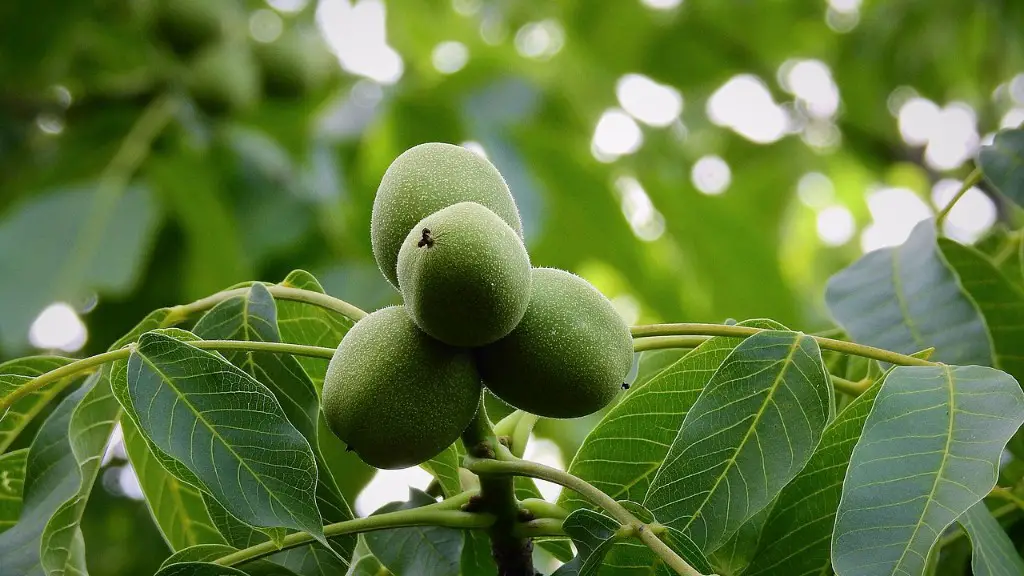It is usual for a lemon tree’s leaves to drop off at certain points throughout the year, but when it is happening more frequently or excessively it can signify a more serious problem and cause the death of your tree. As an academic expert, here I look at the common causes of lemon tree leaf loss, tips for prevention and effective solutions if the problem persists.
Firstly, the most common cause of lemon tree leaf loss is incorrect watering. Depending on environmental factors, a lemon tree needs between one and two inches of water per week. Too much water or too little water can cause the tree leaves to drop off or become discoloured. Incorrect watering can also cause root rot and other issues which can further damage the tree and cause it to lose its leaves.
In addition, nutrient deficiency can also cause lemon tree leaves to drop off. When the soil surrounding the tree is deficient in essential nutrients, such as nitrogen, potassium and magnesium, a lemon tree can experience a deficiency due to the soil not providing enough of these essential nutrients. It is also possible for the tree to become deficient in a specific type of nutrient, such as calcium, which can further impair its regular growth and lead to leaf drop.
Moreover, environmental factors such as temperature and wind can also contribute to lemon tree leaf loss. Low temperatures can stimulate leaf drop, as the plant will try to conserve energy by dropping the oldest, least active leaves. Wind can also cause the leaves to become easily dried out, resulting in defoliation, while high winds may also cause the leaves to physically drop off by ripping them from the stems.
Furthermore, disease is another common cause of lemon tree leaf loss. Bacterial and fungal diseases can affect lemon trees, with the former causing leaves to become discoloured and drop off the tree, while fungi can cause the leaves to become withered and drop from the tree. These diseases can also spread to other trees, so it is important to identify the disease and take appropriate measures to stop the spread and repair the damage done.
Finally, pests can also be major contributors to a lemon tree leaf loss. Common pests such as mites, aphids and scale can all cause serious damage to the tree, resulting in the leaves becoming discoloured and dropping off. It is important to regularly inspect the tree for any signs of pests and take timely and effective pest control measures to help reduce any damage caused.
Common Prevention Tips
The best way to combat lemon tree leaf drop is to take preventative action:
First and foremost, it is important to regularly inspect the tree and soil for any signs of pests or disease, and take immediate action to prevent the spread and further damage. Regular inspection can also help to identify any nutrient deficiencies in the soil, allowing for speedy treatment and prevention of any further damage.
Furthermore, it is important to monitor and adjust watering as needed. Too little water can be just as damaging as too much, as adequate soil moisture is crucial for tree health. A good way to measure the proper level of watering is by using a moisture meter.
In addition, it is important to ensure that the lemon tree is in a sheltered spot to protect it from wind, low temperatures and other environmental factors. If possible, try to keep the tree in an area with constant temperatures and minimal wind.
Finally, it is also important to regularly apply essential nutrients and fertilisers to the soil to ensure that the tree remains healthy and does not experience nutrient deficiencies. It is also important to mulch the soil to help retain moisture and promote healthy tree growth.
Effective Solutions
If your tree has already lost some of its leaves, there are a few things you can do to try and bring it back to health:
Firstly, it is important to not over water the tree, as this can exacerbate the issue. Try to reduce the frequency of watering and only water when the soil is completely dry.
In addition, try to adjust the environmental conditions around the tree to ensure that it remains sheltered from wind and other environmental factors. If possible, move the tree to a more sheltered location, such as a sheltered spot within your house.
Moreover, it is important to use a mixture of water and fertilizer to water the tree regularly, as this can provide essential nutrients to the soil and help to restore the tree’s health. A good rule of thumb is to use one tablespoon of fertilizer per one gallon of water.
Furthermore, it is important to regularly apply insecticides, fungicides and other pest control measures to the tree. These measures will help to prevent any further damage to the tree, as well as preventing any further spread of the pest or disease.
Finally, it is important to monitor the tree for any signs of pests and disease and take immediate action to prevent further damage. If necessary, call a professional arborist for further assistance and advice.
Signs of Stress
Lemon tree leaf drop can sometimes be a sign of stress, so it is important to look out for any other signs that the tree is not doing well. Some signs of stress include:
Firstly, yellow or brown discolouration on the leaves can be a sign that the tree is experiencing stress and should be addressed as soon as possible.
In addition, wilting leaves can also be an indication that the tree is under stress, as this is a sign that the tree is not receiving enough nutrients or sufficient water.
Moreover, white spots or powdery substances on the leaves may also be an indication that the tree is stressed from either lack of sufficient water or too much water.
Furthermore, weak growth or new leaves that are not developing properly are also signs of stress and should be investigated as soon as possible.
Finally, if the trunk of the tree appears to be weak or damaged, it may be a sign that something is wrong and it is important to take action immediately.
Act Quickly
It is important to act quickly if your lemon tree is losing its leaves, as the longer the problem persists the more damage can occur. Regular inspection, monitoring and taking timely action is the key to preserving and restoring the health of your tree.
Moreover, it is important to remember that prevention is the best measure: try to protect the tree from environmental factors, prevent nutrient deficiencies, use insecticide and fungicide regularly, and monitor and adjust watering as needed. Taking timely action will help to protect the tree from further damage and restore it to full health.
Leaf Maintenance
In order to maintain the health of your lemon tree, it is important to adopt a few regular practices, such as:
Firstly, it is important to prune the tree regularly, removing any old or damaged branches and stems to make way for new, healthy growth.
In addition, it is important to monitor the environment around the tree and adjust as needed to ensure that the tree is protected from environmental factors such as wind and low temperatures.
Moreover, it is important to fertilize the tree when needed to ensure that the plant is receiving adequate nutrients and minerals for healthy growth.
Furthermore, it is important to monitor the tree for pests regularly and take measures to prevent any further spread of the pests. This can be done by regular spraying of insecticides and fungicides.
Finally, it is important to water the tree as needed, but not too much or too little. A good way to measure proper watering is by using a moisture meter.


